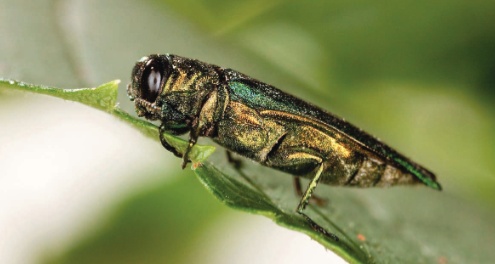holistic management of emerging forest pests and diseases
Science Magazine features HOMED’s research
A Science Magazine article talks about ways to identify potential insect invaders, with the goal to avoid the harmful ecological and economic consequences that they are causing. The article mentions HOMED as an EU project adopting the approach of planting ‘sentinel trees’ from their own local regions in distant continents, and then observing attacking insects and pathogens. In this way, an early warning of which exotic pests are likely to cause damage can be acquired.
Sentinel trees could help prevent the spread of exotic insects, such as the emerald ash borer of Asia
HOMED partner Alain Roques from France’s National Institute for Agriculture, Food, and Environment is acknowledged pioneer of the approach with planting seven tree species in Fuyang and near Beijing in China. As a result of the study, researcher Roques reported five threatening insect species, and especially a bagworm moth that is capable of damaging numerous broadleaved tree species, to the U.S. Department of Agriculture conference in Annapolis, Maryland.
HOMED is already over one year into the plan to develop a full panel of scientific knowledge and practical solutions for the management of emerging native and non-native pests and pathogens threatening European forests. In this objective, HOMED is currently settling a large network of sentinel plantings in China, the USA, South Africa and Europe (France, Italy, Switzerland) under the leadership of René Eschen (CABI, Switzerland).
Find the article by Gabriel Popkin on sentinel trees in the Science Magazine.
